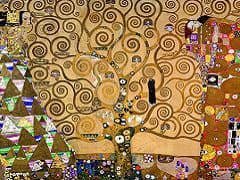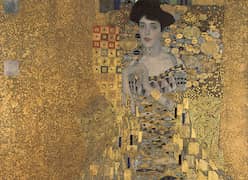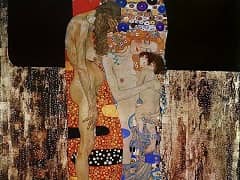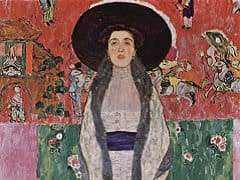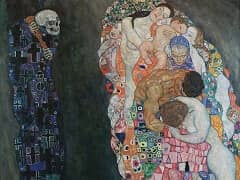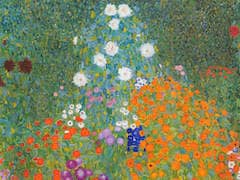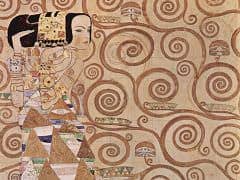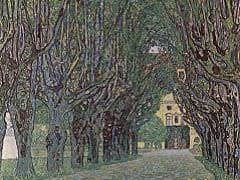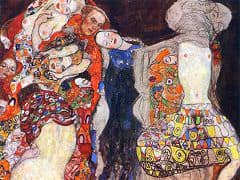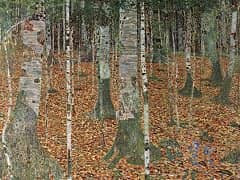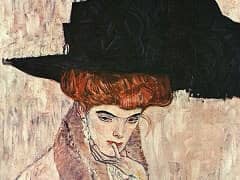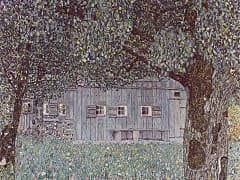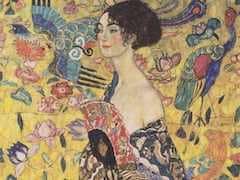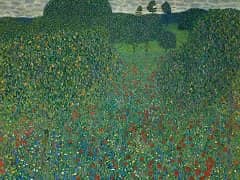Lady with Fan, 1918 by Gustav Klimt

A study of Gustav Klimt's favorite subject, the female form, "Lady with Fan" reflects both the influence of the Japonism trend in modern art and Klimt's distinctive style. As one of the Viennese artist's later works, the painting's date of completion was 1918, the year Klimt died.
After helping to establish the Viennese Secession, an avant-garde art movement, Klimt began taking greater risks in his work than ever before. In the early 1900s, his art became more emotive and passionate.
The yellow background of Lady with Fan is reminiscent of Klimt's gold-period paintings such as The Kiss. The colorful birds and vining flowers reflect the artist's characteristically exuberant use of color and embellishment. The background also imitates Japanese wood block printing with its vibrant, stylized patterns.
The Lady's dress and the fan she is holding feature ornate designs as well. With the lively decorative elements in this painting, Klimt straddles the line between fine art and craft. Klimt's combination of the two echoes the driving force behind the Arts and Crafts movement, which began to gain steam during the early 20th century. The movement spanned architecture, textiles, interior design and even jewelry making, bringing the decorative crafts out of the shadows and into the spotlight.
The light-hearted spirit that color and ornament create in "Lady with Fan" is a fitting environment for the central figure herself. Her face glows with beauty. The curve of her bare shoulder makes a lovely contrast to her decorative dress. As a result, the painting celebrates beauty in both the human form and the world that surrounds it.
As an exclamation point at the end of his life's work, Lady with Fan sums up the artist's evolution of style. A mix of the reverent and erotic, fine art and ornament, the artwork is a wonderful tribute to the legacy of an exuberant, adventurous and groundbreaking painter.


